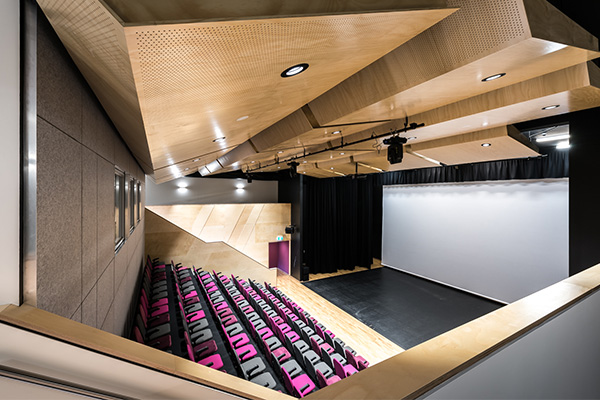Collaboration And Long Term Planning, The Future Of Education Construction

By Jon Anderson, Construction Manager
As a specialist in Education Construction, and on-site Construction Manager at the University of Adelaide, I take a keen interest in the future of education construction. In recent years, I have witnessed the education landscape being reshaped by globalisation and the digital revolution.
Students are increasingly conducting their lives through social media and online services and they now expect educational institutions to communicate with them online too. Education infrastructure of today therefore needs to not only include state-of-the-art equipment for Science, Technology, Engineering and Maths (STEM) subjects; education spaces must also be updated to accommodate contemporary trends in delivery.
Governments are investing millions to upgrade and build new educational facilities to match these changes; and savvy education institutions are adopting a collaborative approach with master builders, including long term planning to future-proof their property.
In order to capitalise on this investment, we need to understand that Infrastructure is interconnected; each building upgrades impacts stakeholders and operations from one facility to the next. If construction experts are involved in the early stages of planning, the impacts can be taken into consideration long before any works begin.
It’s about collaborating to give the client the right advice to future-proof for the next wave of technology.
The future of education construction
Long term planning
With a dynamic and forward facing approach, the University of Adelaide (UoA) also looks to be at the leading edge of education construction. UoA has a Masterplan, a vision for the future of their institution up to 2035. By adopting sequential long term planning with early involvement from Sarah Constructions, UoA infrastructure upgrades can be mapped out as a programme of works, not just as individual projects.
This approach delivers a streamlined process and ultimately saves money. With foresight and planning, we’re able to add value to the design development process by proposing constructability improvements and future-proof efficiencies.
With a commitment to facilities that allows students to learn and grow, St Johns Grammar Performing Arts Centre provides another example of success through early planning. Sarah had considerable input into the design and worked closely with the architects from the beginning, researching and coordinating affordable design solutions that remained faithful to the overall vision.
It was due to this close collaboration and expert cost management that savings could be made and redistributed to afford what other builders deemed impossible within their budget: A light, open plan learning centre, complete with top of the range equipment and the “wow” factor of a spectacular atrium.
Collaboration
Education institutions, by their very nature, are all about the future. They’re in the business of nurturing our next inventors, politicians, teachers and builders. It’s important to recognise that life now is a little different to back when we were in school. The internet, computers and mobile technology have changed the world we live in, almost beyond recognition.
Personally, I believe this evolution has largely been for the better. As globalisation and IT has developed, we have become more connected and therefore more collaborative. Processes have been made faster and easier; we can do more and so we expect more. The future of education construction needs to reflect these changes and leave room for further development.
With the Margaret Ames Learning Centre at Immanuel College, a key requirement of the brief was to foster collaboration. To encourage students in original thinking, the learning centre included open plan learning areas, interconnecting classrooms plus first class IT and AV capabilities. Immanuel College has embraced future focused thinking; their new centre was the first secondary teaching space of its kind in South Australia.
Similarly, the new Common Teaching Area and breakout space in the Barr Smith Building at UoA showcases the kind of flexible learning environments that are needed to be future-ready. Multipurpose rooms suitable for classes in anything from Japanese Language to Forensic Science, coupled with an unconventional, open plan breakout space, keeps UoA at the cutting-edge of education and maintains appeal within their target markets.
Welcome to the future
It’s not just collaborative learning environments that pave the way for the future. It’s collaborative business operations too. At Sarah Constructions, we enjoy less contractual, more collaborative relationships, because we understand that we’re all experts in our respective fields.
Delivering great outcomes requires input from experts across industry which is why we take a collaborative approach with our consultants. In the same way as it benefits the client to involve us as early as possible, it benefits us to involve our consultants and sub-contractors as early as possible as well. We believe that the sooner people come on board and become familiar with your operations, the better.
Taking a long term planning approach to Education Construction means you can map out a pragmatic and proactive process for realising your vision in the most efficient, cost-effective way. With early involvement from construction experts, you’re beginning that process of growth and transformation on the front foot, armed with the practical expertise of a team that specialises in turning visions into lasting legacies.